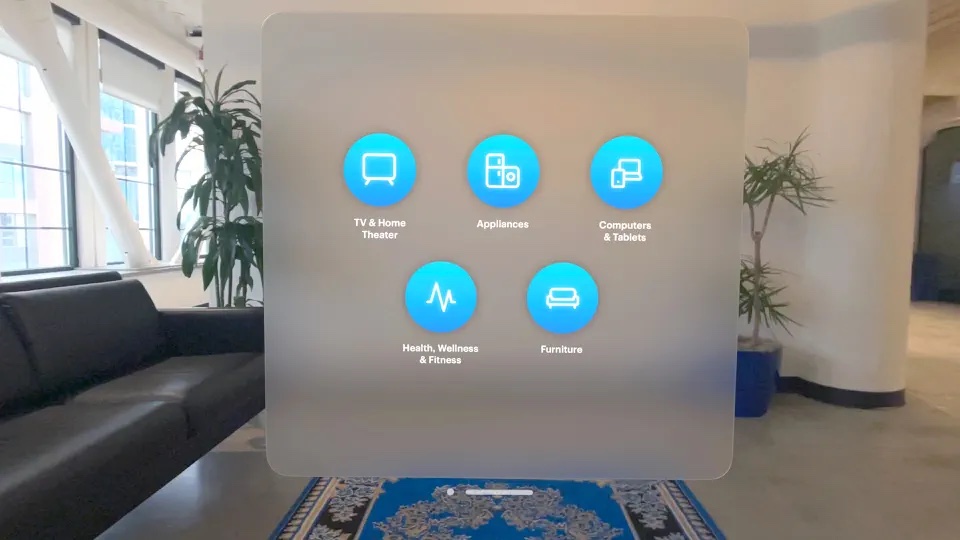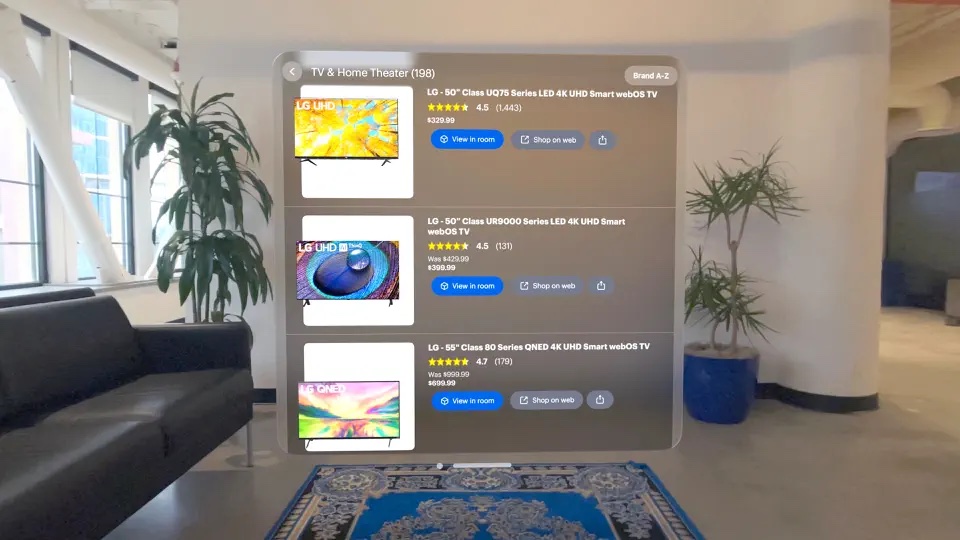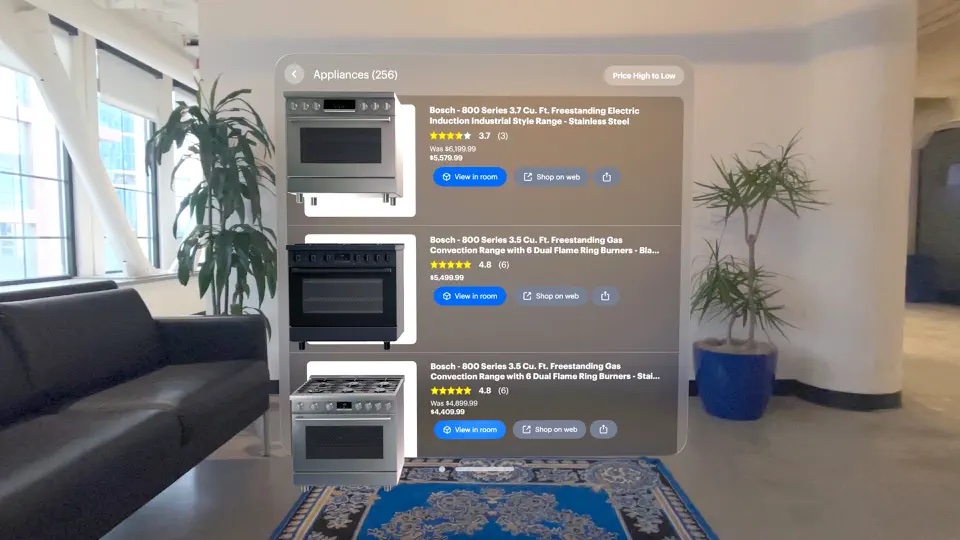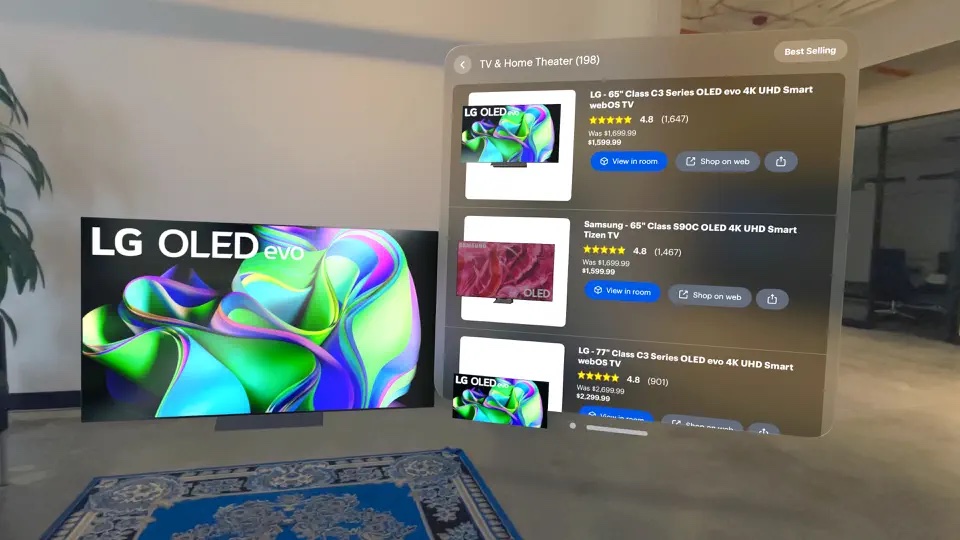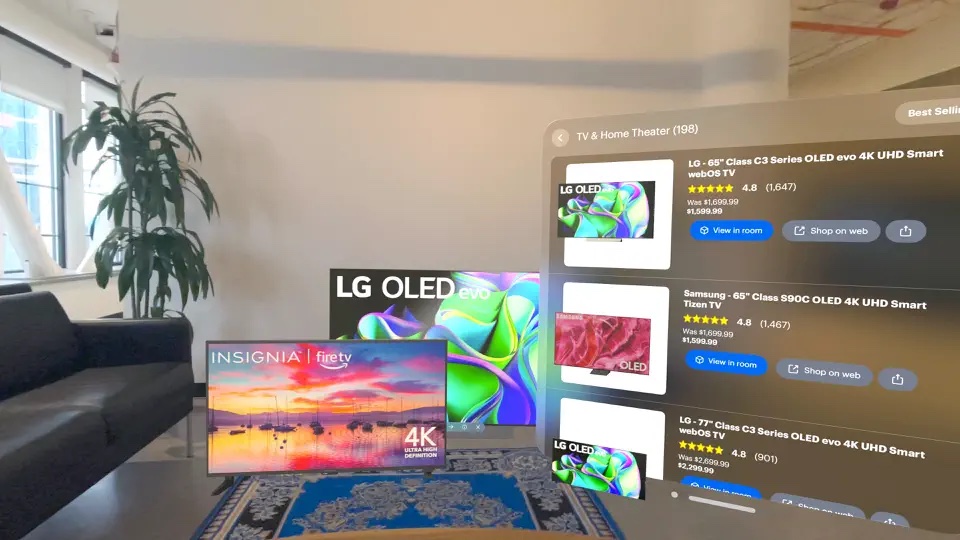Folks with a Vision Pro headset can now use it to shop at Best Buy’s online store.
The retail giant on Thursday launched the Envision augmented reality (AR) app for Apple’s Vision Pro headset in an effort to make the shopping experience a little more fun and engaging. It also released a bunch of images (top) showing the kind of interface you can expect with the new tool.
Best Buy is offering the Envision app as “a new way that our customers can explore, discover, and bring new technology to life in their own living space,” and to help them “plan their ultimate home technology setup.”
After firing up the app on the Vision Pro, you can use it to preview 3D models of various products, and even see how they’ll look in different parts of your home. Once you find an item you’re interested in, you can check out its price and rating, and send the product directly to a friend via text or email, the retailer said in a post announcing the new AR tool.
Best of all, you can open the product page within the Vision Pro Safari app and make your purchase there and then on BestBuy.com.
Commenting on the new app, Brian Tilzer, Best Buy’s chief digital, analytics, and technology officer, said: “Best Buy Envision is another way we’re utilizing innovative technology to humanize consumer electronics. The app allows our customers to see, in a lifelike way, how technology will look and feel right in their own homes, delivering an immersive and personalized shopping experience.”
Best Buy’s shopping app for Apple’s Vision Pro headset is available now from the App Store.
